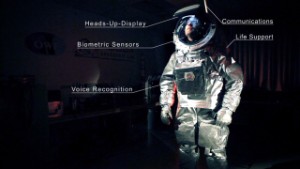More countries join Flight 370 search
STORY HIGHLIGHTS
- NEW: CNN analysts say figuring out motive of whoever steered plane off course is key
- Background checks on some passengers complete with no red flags
- Chinese families lose patience with Malaysian government and Malaysia Airlines
- Authorities still looking at flight simulator taken from pilot's home
Kuala Lumpur, Malaysia -- Where do you even begin to look, when the search area covers vast swaths of land and water, stretching thousands of miles, from Kazakhstan to the Indian Ocean?
That's the question for Malaysian officials and authorities from 24 other nations as people search for a ninth day, trying to find Malaysia Airlines Flight 370 and the 239 people on board.
As the search area grows bigger, authorities are also increasing their scrutiny of the pilots, searching their homes in the quest for clues. That includes a flight simulator from the captain's home.
It also includes interviewing the engineers who were in contact with MH370 before it took off, according to a statement from acting Transport Minister Datuk Seri Hishammuddin Tun Hussein to BERNAMA, Malaysia's official news agency. The transport minister characterized the interviews as "normal procedure."
"Police are still working on it. ... Nothing conclusive yet," a senior police official who has direct knowledge of the investigation told CNN on Sunday night, speaking on the condition of anonymity because the official was not authorized to speak to the press.
With news that the Boeing 777-200ER might have flown for more than seven hours after its transponder stopped sending signals March 8, officials said the expanding search area extends over 11 countries, stretching as far north as Kazakhstan, a large nation in Central Asia far from any ocean.
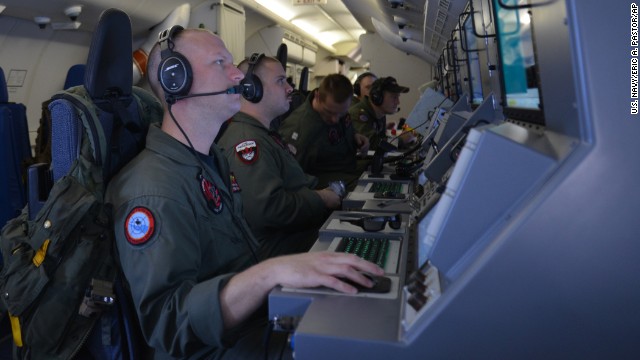 Photos: The search for Malaysia Airlines Flight 370
Photos: The search for Malaysia Airlines Flight 370
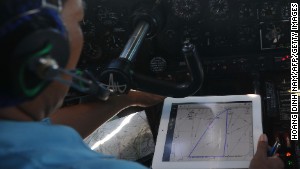 Jet disappearance 'unprecedented'
Jet disappearance 'unprecedented'
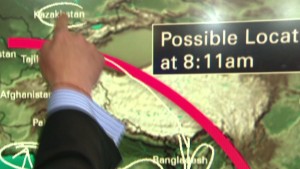 The search for Flight 370 continues
The search for Flight 370 continues
"This is a significant recalibration of the search," Malaysia's acting Transportation Minister Hishammuddin Hussein said Sunday.
There are still more questions than answers about the missing flight. Figuring out the motive of whoever apparently steered the plane off course is key, analysts told CNN Sunday.
"I think they had an end game in mind from the very beginning," CNN aviation analyst Jim Tilmon said, "and they have executed a lot of things that have led us down a road. Are we going to the right place? I'm not sure."
The plane disappeared on March 8, en route from Kuala Lumpur to Beijing. Airline CEO Ahmad Jauhari Yahya said Sunday the missing passenger jet took off with its normal amount of fuel needed for the roughly six-hour flight and did not have extra fuel on board that could have extended its range.
One of the nations involved in the search, Pakistan, said Sunday that the plane never showed up on its civilian radars and would have been treated as a threat if it had.
The Times of India reported that India's military also said there was no way the plane could have flown over India without being picked up on radar.
A study of the flight's cargo manifest showed there were no dangerous materials on board that concerned investigators, he told reporters.
Investigators are still looking into the backgrounds of the passengers to see whether any of them were trained pilots.
"There are still a few countries who have yet to respond to our request for a background check," said Khalid Abu Bakar, inspector general of the Royal Malaysian Police Force. "But there are a few ... foreign intelligence agencies who have cleared all the(ir) passengers."
U.S. intelligence officials are leaning toward the theory that "those in the cockpit" -- the captain and co-pilot -- were responsible for the mysterious disappearance, a U.S. official with direct knowledge of the latest thinking told CNN.
The official emphasized no final conclusions have been drawn and all the internal intelligence discussions are based on preliminary assessments of what is known to date.
Other scenarios could still emerge.
The notion of a hijacking has not been ruled out, the official said Saturday.
Malaysian Prime Minister Najib Razak told reporters on Saturday that the plane veered off course due to apparent deliberate action taken by somebody on board.
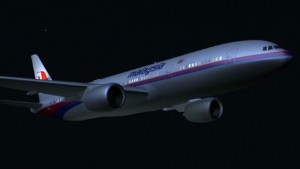 A timeline of Flight 370
A timeline of Flight 370
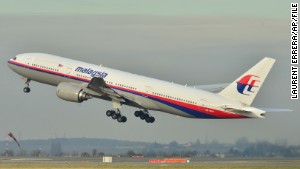 What does the U.S. know about MH 370?
What does the U.S. know about MH 370?
'Someone acting deliberately'
The first clue that the captain or co-pilot may have been involved stems from when the plane made a sharp, deliberate turn just after it last communicated with Kuala Lumpur air traffic controllers, and before it would have to communicate with Vietnamese controllers, according to the U.S. official with knowledge of the latest intelligence thinking.
"This is the perfect place to start to disappear," the official said.
Adding to the intrigue, ABC News reported that the dramatic left turn was preprogrammed into the plane's navigation computer. It's a task that would have required extensive piloting experience.
Two senior law enforcement officials also told ABC that new information revealed the plane performed "tactical evasion maneuvers" after it disappeared from radar. CNN was unable to confirm these reports.
Military radar showed the jetliner flew in a westerly direction back over the Malaysian Peninsula, Najib said. It is then believed to have either turned northwest toward the Bay of Bengal or southwest elsewhere in the Indian Ocean, he said.
"Evidence is consistent with someone acting deliberately from inside the plane," the Prime Minister said, officially confirming the plane's disappearance was not caused by an accident. "Despite media reports that the plane was hijacked, we are investigating all major possibilities on what caused MH370 to deviate."
Pilot: Whoever changed flight path was an expert
The unconfirmed possibility that the plane could be on land means authorities need to answer that question -- and fast, analysts said.
"Time is even more of the essence. If this airplane has been taken to be used as a weapon, then the time that has been taken to prepare the aircraft for whatever deed is the plan, obviously to thwart that, it's all about time," said Shawn Pruchnicki, who teaches aviation safety and accident investigation at The Ohio State University.
Tilmon said whoever deliberately steered the plane off course likely did it with help. But what's next is anyone's guess, he said.
"We have been behind them all along, so now, if they had a plan, and if that plan included being able to set down someplace and refuel a little bit, we are looking at something that we may never see the end of," he said.
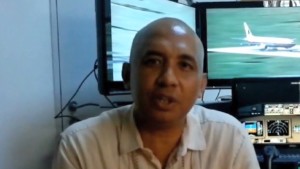 Police search pilot's home
Police search pilot's home
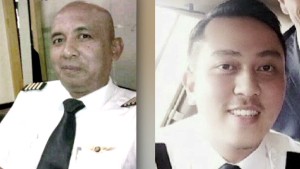 Who were the men who flew flight 370
Who were the men who flew flight 370
The pilots
On Saturday, Malaysian police searched the home of pilot Zaharie Ahmad Shah, 53. Zaharie lives in an upscale, gated community in Shah Alam, outside Malaysia's capital, Kuala Lumpur.
The Ministry of Transport said Sunday that police were examining a flight simulator found at the pilot's house.
It's somewhat common among aviation enthusiasts to use online flight simulator programs to replicate various situations. Simulators allow users to virtually experience scenarios in various aircraft. Programs can simulate flight routes, landings and takeoffs from actual airports.
Two vans were loaded with small bags, similar to shopping bags, at the home of the co-pilot, 27-year-old Fariq Ab Hamid, according to a CNN crew who observed activities at the residence. It was unclear whether the bags were taken from the home, and police made no comment about their activities there.
Najib made clear in a news conference that in light of the latest developments, authorities have refocused their investigation to the crew, ground staff and passengers on board.
Hishammuddin, the transportation minister, told reporters the pilots didn't request to work together.
What we know about the cockpit crew
Peter Chong, a friend of Zaharie's, said he had been in the pilot's house and tried the simulator.
"It's a reflection of his love for people -- because he wants to share the joy of flying with his friends," Chong said.
He was bothered by speculation about the captain's credibility and questions about possible ties to terrorism.
"I think it is a little bit insensitive and unfair to the family," he said, adding he thought there was no evidence to suggest any ulterior motives on Shah's part.
A senior U.S. law enforcement official told CNN that investigators are carefully reviewing the information so far collected on the pilots to determine whether there is something to indicate a plan or a motive.
"In any criminal investigation, the most important analysis is what's the motive," said Mary Schiavo, a CNN aviation analyst and former inspector general for the U.S. Department of Transportation. "I think right now, they have to look for it, and they have to rule it out, if they can, with their own pilots, so they can start looking for motives elsewhere."
Undoubtedly, authorities will scour through the flight manifest and look further to see whether any of the passengers on board had flight training or connections to terror groups.
According to The New York Times, one of the passengers was an aviation engineer on his way to Beijing to work for a private-jet company.
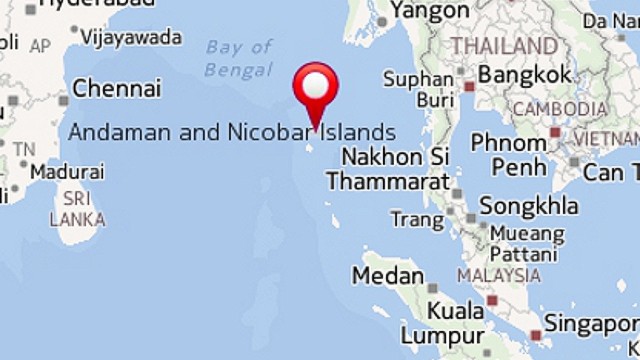 Andaman and Nicobar Islands
Andaman and Nicobar Islands
Kazakhstan to Indian Ocean
As the focus of the investigation has shifted, so, too, has the focus of the search.
Information from international and Malaysian officials indicates the jet may have flown for more than seven hours after the last contact with the pilots.
Flight 370 took off from Kuala Lumpur at 12:41 a.m. March 8. The last satellite communication from the plane occurred at 8:11 a.m., Najib said, well past the scheduled arrival time in Beijing. It is possible this contact could have been made from the ground, as long as the airplane still had electrical power, Malaysia's civil aviation chief Azharuddin Abdul Rahman said Sunday.
That last communication, Najib said, was in one of two possible traffic corridors shown on a map released to reporters. A northern arc stretches from the border of Kazakhstan and Turkmenistan to northern Thailand, and a southern arc spans from Indonesia to the southern Indian Ocean.
"Due to the type of satellite data, we are unable to confirm the precise location of the plane when it last made contact with the satellite," Najib said.
Because the northern parts of the traffic corridor include some tightly guarded airspace over India, Pakistan and even some U.S. installations in Afghanistan, U.S. authorities believe it more likely the aircraft crashed into waters outside of the reach of radar south of India, a U.S. official told CNN. If it had flown farther north, it's likely it would have been detected by radar.
Malaysia's Ministry of Transport said Sunday that both the northern and southern corridors are being treated with equal importance. Malaysian officials are working with 25 countries, many of them along the corridors. They include Kazakhstan, Uzbekistan, Kyrgyzstan, Turkmenistan, Pakistan, Bangladesh, India, China, Myanmar, Laos, Vietnam, Thailand, Indonesia, Australia, France, the United Kingdom and the United States.
Afghanistan's Ministry of Transport said it has joined the search, but said there is no evidence the plane flew over Afghan soil.
Separately, India has "temporarily halted" its search for the missing plane while Malaysian authorities reassess the situation, according to a top military official.
"We are conserving our assets for now," Rear Adm. Sudhir Pillai, the chief of staff of India's joint Andaman and Nicobar command, said Sunday. "We are on a standby."
He said the Malaysians are reviewing India's deployment.
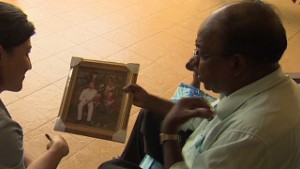 Waiting is the hardest part for families
Waiting is the hardest part for families
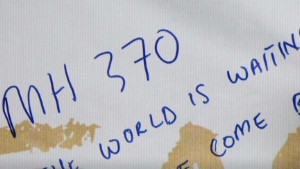 Why we are glued to plane coverage
Why we are glued to plane coverage
Families at boiling point
For the families and loved ones of those aboard Flight 370, tensions boiled over Sunday in Beijing at the daily briefing by Malaysia Airlines.
Nine days after the plane went missing, patience is running thin with officials.
Before a packed room, one man told them that the families have already lost faith.
"A liar can lie once, twice or three times, but what's the point (to) keep lying?" he said. "What we ask for is the truth. Don't hide things from us."
In the face of mounting criticism over its handling of the situation, Malaysia Airlines has defended its actions, saying it took time to verify satellite signals and give authorities a chance to analyze their significance before releasing information.
But at Sunday's Beijing briefing, a majority of the people in the room stood up when the man asked how many had lost trust in the airline and the Malaysian government.
Another man rushed the front of the room and tried to throw a punch but was stopped.
The airline has been picking up the tab for families of the Chinese passengers to stay in Beijing during the ordeal.
China is sending technical experts to join the investigation, and two Chinese search vessels headed for the Strait of Malacca, according to Xinhua.
People are across the world have shown their support for those involved.
During his weekly Sunday message following prayers at the Vatican, Pope Francis asked the crowd to pray for the crew members and passengers of the missing Malaysia Airlines plane and their families. "We are close to them in this difficult moment," Pope Francis said.
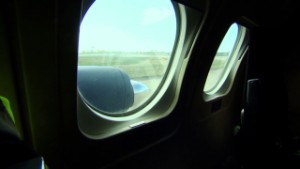

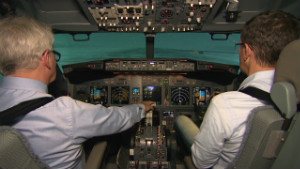
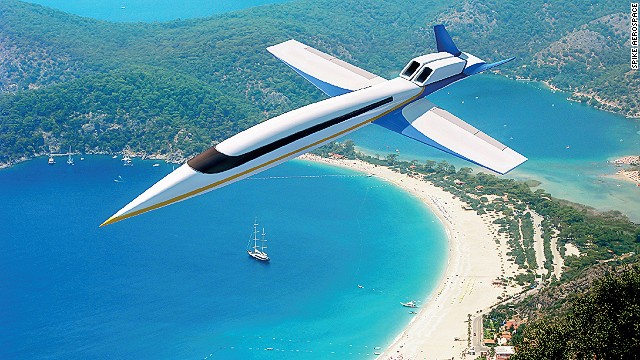 Spike Aerospace is building what it hopes will be the world's first supersonic business jet, one capable of traveling at Mach 1.8. The S-512, expected to launch in 2018, could cut travel time in half.
Spike Aerospace is building what it hopes will be the world's first supersonic business jet, one capable of traveling at Mach 1.8. The S-512, expected to launch in 2018, could cut travel time in half.













